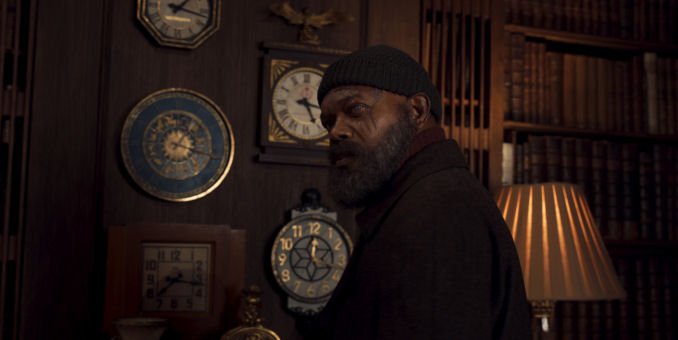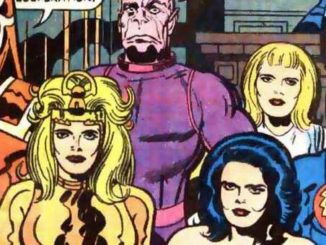
“Imagine a world where you can’t trust information.”
That is one of the first lines in the first episode of Secret Invasion, the new Marvel Cinematic Universe series debuting on Disney+ June 21, and it is hard not to be at least a tiny bit cynical in thinking that maybe we are on the cusp of that already. Deepfake technology and AI generated imagery are rapidly getting to the point where it may soon be nigh impossible to distinguish actual photos and video recordings from computer-generated fakery. But that is the very real fear that Marvel is tapping into with this new series, delivering a story that feels ripped from a 1970s paranoid political thriller and then filtered through the comic book tropes of the MCU.
It has been a couple of years since the return of the half of the Earth’s population that disappeared during the Snap, that five year period when the intergalactic genocidal warlord used the Infinity Stones to erase half of the universe’s population from existence only to have that reversed by the Avengers. (See The Avengers: Infinity War and Endgame for all of that, though it is not necessary to know all the details for this new series.) Spymaster Nick Fury has not been seen for most of that time, working in space to keep the planet safe from extraterrestrial threats. However, that means that he has missed one danger to Earth and its native inhabitants that has been growing right under his nose – the Skrulls. A race of shapeshifting aliens displaced by war, the Skrulls were settled onto Earth in the late 1990s with Fury’s help and a promise to work towards a time when they would be able to co-mingle with humans without having to use their powers to mimic human appearances. However, three decades later, a faction of the Skrulls have tired of hiding and are slowly infiltrating the corridors of power around the world, their ultimate objective being triggering the nations of the world into open warfare against each other with the goal of humanity wiping itself out so they can have Earth to themselves. And with several of his former allies distrusting him or outright turning their back on him and facing an enemy who can disguise themselves as anyone, Fury finds himself having to save the world all by himself.
Comics fans will of course know that the source material for this series, a 2008 comics event that saw the revelation that a number of heroes had been replaced by Skrulls, sometimes years ago, upending everything the readers thought they knew about certain characters’ more recent histories. Here, the series scales that back somewhat. No superheroes have been replaced. In fact, there is a discussion in the second episode that explains why Nick Fury is against bringing in someone from the Avengers to help combat this threat. (Outside of the budget-busting reasons inherent in television productions, that is.) But scaling the size of the story down and away from the large and super-powered cast of characters in the comics gives the series more of a grounding in reality that helps to heighten the just tension. And yes, I realize that I did just comment positively on the reality of a story that involves shape-shfting aliens.
As many characters are quick to point out, it has been some time since we have seen the character of Nick Fury out and about in the MCU. (Since the tag scene in 2019’s Spider-Man: Far From Home to be exact.) Jackson’s Fury has been one of the linchpins of the overall franchise, so it is nice to see a return of the calculating spymaster. And with this return, we see not just some cracks in Fury’s tough guy facade, but we get to look deep inside those cracks for a better look at his character than seen before. Fury is a man who very much feels the weight of the decades of his work defending humanity against extraordinary events. He is tired but he keeps on fighting because he doesn’t seem to know what else to do. As an actor, Jackson rises to the occasion, showing us a humanity in Fury that we have not really seen before, even after fifteen years worth of appearances in the MCU.
The first two episodes made available to critics consist, not unexpectedly, of a lot of table setting for the remaining four hour-long installments to follow. We see how Skrull leader Gravik’s plan slowly isolates Fury from his usual allies and resources, setting up the obstacles he will need to overcome. And despite an intense performance from Kingsley Ben-Adir as the leader of the Skrull faction, these first two hours don’t dive too deep into his motivations outside of a flashback or two that does establish a personal connection with Fury. But as noted, there are still four hours left to go, and if they hold to the quality of these first two, fans should be in for a fun ride that delve deeper into these two characters as they further ramp up their cat and mouse game with each other for the fate of the world.




